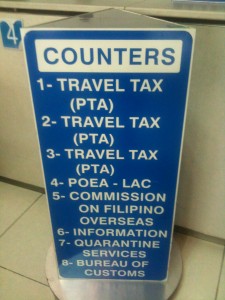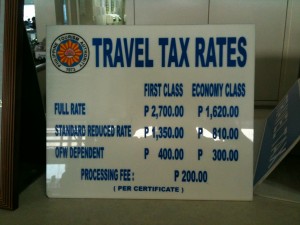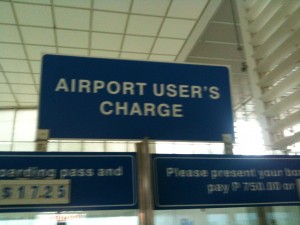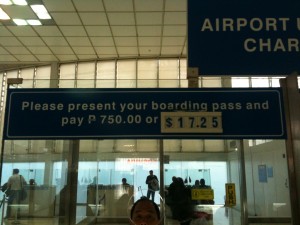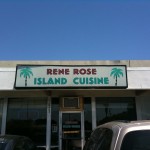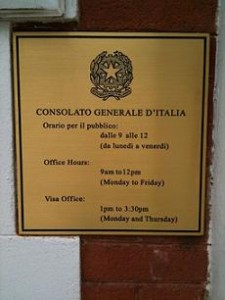The Philippine Airlines website presents the following information the travel tax on their FAQ. Sadly, the link on this page that is supposed to take you to a government site for more information leads to a site that has been suspended.
From: http://www.philippineairlines.com/faq/checkin/check_in.jsp
How much is the Philippine Travel Tax?
For adult passengers, the travel tax is PHP1,620 (Business and Economy class) and PHP810 for children (2-11 years).
I bought my ticket from your website. Is travel tax already included in the total amount paid? No. Philippine Travel Tax is not included in the total fare quoted online. For international journeys, Philippine travel tax, if applicable, shall be collected by the Philippine Tourism Authority at Philippine Airports.
Travel tax shall be levied on (a) all citizens of the Philippines; (b) permanent resident aliens; and (c) non-immigrant aliens who have stayed in the Philippines for more than one (1) year, who are leaving the country.
If you are exempted from paying the Philippine Travel Tax or entitled to a reduced travel tax, please secure applicable certificates such as follows, from Philippine Tourism Authority (PTA), Department of Tourism (DOT) before making reservations:
Tax Exemption Certificate (TEC) if you are exempted from paying the Philippine Travel Tax
Reduced Travel Tax Certificate (RTTC) if you are qualified for a reduced Philippine Travel Tax and
Overseas Employment Certificate (OEC) if you are an Overseas Filipino Worker (OFW)
How much airport terminal fee will I pay for my flight?
Airport terminal fees are PHP550 (effective 01Feb12) for international departures and PHP200 for local/domestic departures. These fees will be collected at the Ninoy Aquino International Airport (Centennial Terminal 2).
For AirPhil Express code-shared flights, PHP200 per passenger will be collected at the NAIA Terminal 3.
